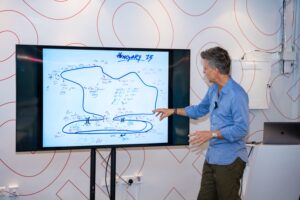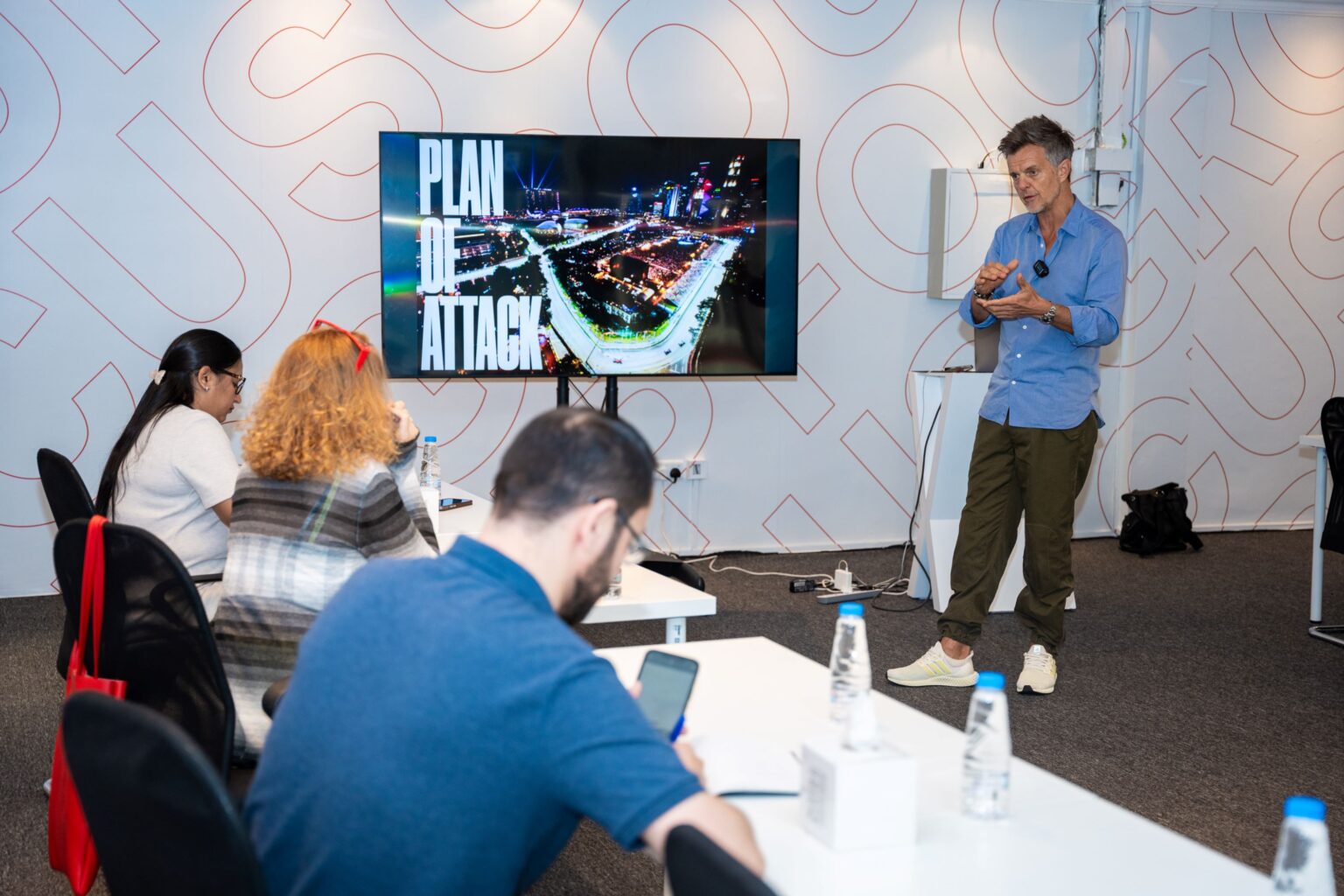Capturing the essence of a thrilling sport like the Formula 1 Grand Prix requires meticulous planning and skillful execution, noted Darren Heath, an award-winning photojournalist, during his talk, ‘Plan of Attack,’ at the Xposure International Photography Festival (Xposure 2024) in Sharjah on Sunday.
The perfect shot doesn’t simply come from pointing and shooting, Darren reminded the audience at the Focus Group, and said, “It’s born out of comprehensive preparation, skill, and precise execution.”
Preparation is essentially the key. “By failing to prepare, you prepare to fail. Always follow a basic approach,” Darren said, pointing at a hand-drawn diagram highlighting the race circuit intricacies and notes prepared for the Hungarian Grand Prix last year. From bridges to corners, each element was mapped out with information on the best vantage points and lighting conditions.
“Before the race weekend officially kicks off, take the opportunity to acclimate to the surroundings, assess shooting locations, and create a plan of attack. Also, choose the equipment before the assignment. I mostly go with two Canon cameras and a selection of lenses. The 50-millimetre lens is my favourite because of its adaptability and power to provide a unique perspective compared to the larger, more conventional lenses. If there is only one lens I could carry, it would be this,” he said, stressing the importance of minimalism while on an assignment.
Heath has been covering Formula 1 Grand Prix for more than 35 years. His work doesn’t just capture the synergy between speed and spectacle but also the not-so-glamorous aspects of a race. At Xposure 2024, his exhibition is a melange of photographs capturing the mood and emotions of drivers before and after the race, the scratches and dents on cars, the beauty of cars in different light exposures, and much more.
Talking about selecting his shots, Heath underlined the importance of distilling thousands of shots down to a curated selection and editing them well. “You need to be rigorous with the editing process. I sometimes edit my pictures four to five times before finalising them. At the end of the day, one good photograph can beautifully encapsulate the entire event.”
When asked about his favourite racing track, Heath said he relishes the challenges of circuits like Singapore, where the heat and humidity test both man and machine. “Your photographs are a creative narrative, study your surroundings well and click loads of shots,” he concluded.
The Focus Group also held a talk on “Photojournalism as a Career” by Giles Clarke. Clarke talked about the essential tools needed to begin a career in photojournalism, news, and documentary photography. He showcased some of the most memorable and iconic images from the world of photojournalism that changed or altered public perception. The discussion allowed the audience a deeper understanding of the composition of photographs.
Both workshops were masterclasses on photojournalism and fielded questions from an audience of experienced and amateur photographers eager to learn something new from the experience of these industry veterans.

